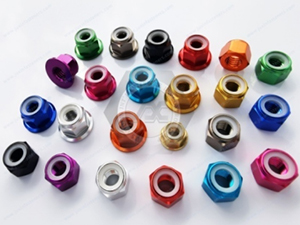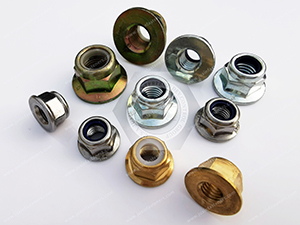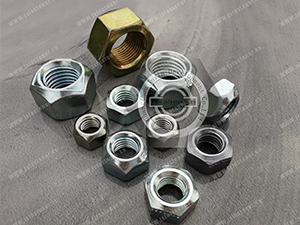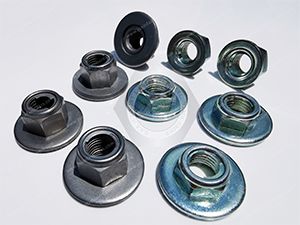Call Us
+86 136 6007 9809
Call Us
+86 136 6007 9809
Mar. 21, 2023
Metal Flange lock nuts, all-metal prevailing torque hexagon nuts, square nuts, ball nuts, flange nuts, the wild seat, hexagon nuts and taper elastic gasket assembly, wheel lock nuts, hexagonal flange jam nuts, Hexagonal nuts, round weld nuts, cap nuts, wing butterfly nuts, Hexagonal thin castle nuts, plate welding nuts, adjusting nuts, Knurled set nuts, 12-spline flange nuts, K nuts, all gold spring band hexagonal lock nuts
1. Locking form
All-metal locking nuts are also known as all-metal self-locking nuts; the primary locking forms are divided into two:
a. Relying on the nut's thread deformation position to play a locking and anti-loosening function, such nuts are collectively known as the 980-V type. Standard forms are as follows: end face three-point type, oval type, and side extrusion type.
 |  |
b. Nuts embedded metal locking piece, by the locking ring to play a loosening role, such nuts are called 980-M type, standard forms are as follows:

2. Locking principle
a. The locking principle of the 980-V nut is that through the die stamping, the nut's thread is deformed by about three teeth, and the inner diameter of the nut thread after deformation is slightly smaller than the outer diameter of the bolt thread. Therefore, the friction force between the threads after tightening is much greater than that of ordinary lines, which can be influential in preventing loosening.
b. The locking principle of the 980-M nut is: the nut is embedded with a heat-treated metal sheet, the inner diameter of which is slightly smaller than the outer diameter of the bolt threads, and when the nut is tightened, the metal sheet catches the bolt threads, which can effectively play the role of anti-loosening and anti-vibration.
3. Installation method
Lock nut installation must be tightened with the help of tools (such as a ratchet), and stainless steel nuts are recommended to be pre-lubricated to prevent nut locking problems during rapid installation.
4. Use the advice
Locking nuts can be used repeatedly, but it is not recommended to frequently disassemble and install several times after repeated disassembly and installation will cause a significant drop in the nut locking torque (disassembly and installation of the fifth time to be significantly lower than the first disassembly).
5. Mechanical properties
The mechanical properties of all-metal locking nuts are the same as those of ordinary nuts, with standard grades of carbon steel generally 8, 10, and 12 and stainless steel generally 70 and 80.
Its carbon steel material nut load and hardness requirements concerning the standard implementation of ordinary carbon steel nuts can refer to the legal ISO 898-1 (carbon steel nuts mechanical properties requirements) for acceptance. Stainless steel nuts only refer to the carbon steel nut's required load-holding performance and do not require hardness.
Locking nuts need to refer to the implementation of ISO 2320 (pre-set torque locking nuts mechanical performance requirements) standard requirements of five screwing torque requirements to ensure its locking performance. Ordinary nuts do not have this particular requirement.
 |  |  |  |
Contact Us
Tel.:
+86 020 8621 0320
+86 020 3121 6067
E-mail:
Technical Support:
Navigation
SEND INQUIREY